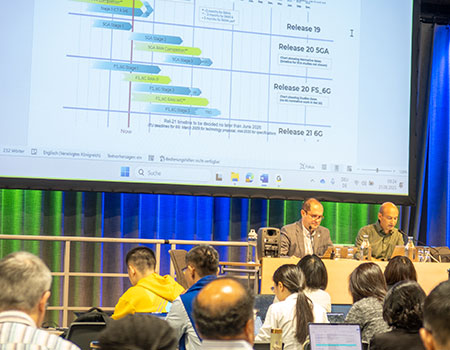3GPP drives GSM-R to a new track
August 5, 2016
By Juergen Merkel, Nokia, rapporteur of the FS_FRMCS study item.
At the recent 3GPP SA plenary, a study item was approved - to investigate the requirements for a new railway communication system, as a successor to the GSM-R service.
GSM-R is facing a number of challenges:
- The system life-cycle is coming to an end, with vendor support uncertain beyond 2030
- Extra capacity is required in some areas to support railway operations
- The rollout of European Rail Traffic Management System (ERTMS) has increased the strain on the GSM-R network
To have a successor technology in place by 2020 for trials and by 2022 for deployment, the International Railway Union (UIC) have published a user requirement specification in their paper “Future Railway Mobile Communication System - FRMCS” (see S1-161250).
 Triggered by this, 3GPP Working Group SA1 have started a first study (see S1-161588) which paves the way for them to identify which FRMCS requirements are in the working scope of 3GPP and to complete a gap analysis of existing functionality in Rel-14 - to identify the work needed in 3GPP Rel-15.
Triggered by this, 3GPP Working Group SA1 have started a first study (see S1-161588) which paves the way for them to identify which FRMCS requirements are in the working scope of 3GPP and to complete a gap analysis of existing functionality in Rel-14 - to identify the work needed in 3GPP Rel-15.
When complete, SA1 will have identified the normative 3GPP work needed to make the FRMCS a success.
[End]
About GSM-R
GSM-R is an adaptation of GSM technology to suit the railways’ needs for communication. 3GPP GSM-R provides the services necessary to support Voice Group Call, Voice Broadcast Call and prioritization of these services by “(enhanced) Multi-Level Precedence and Pre-emption service ((e)MLPP).
GSM-R has been elaborated in cooperation of the International Railway Union (UIC) and ETSI TC SMG - the predecessor of 3GPP - in the second half of the 90’s.
Contact for this article: Kevin FLYNN, Marketing and Communications Officer, 3GPP

 3GPP News
3GPP News




